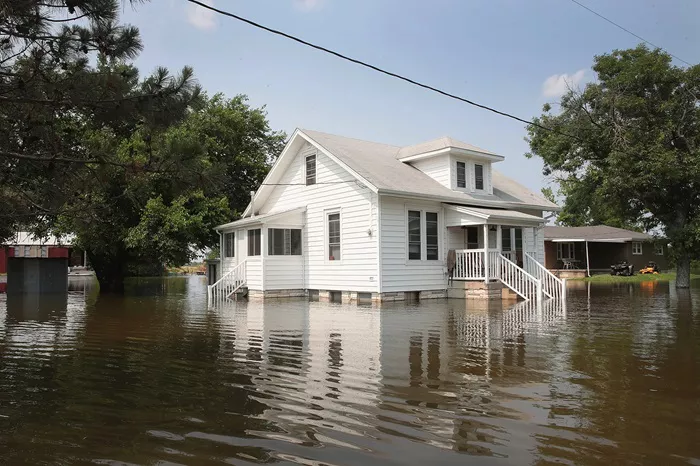Floods can happen suddenly. A heavy rainstorm, hurricane, or rising river can cause serious damage to homes and businesses. That’s why flood insurance is so important. But with so many insurance companies offering it, how do you know which one is the best?
In this guide, we’ll walk you through everything you need to know about flood insurance and the companies that provide it. We’ll keep it simple and clear, so you can make the right choice for your needs.
Why You Need Flood Insurance
Many people believe their homeowners insurance will cover flood damage. Unfortunately, that’s not true. Most standard homeowners policies do not cover floods. If your house gets flooded, you’ll need a separate flood insurance policy to cover repairs and losses.
Flood damage can be expensive. It can ruin your walls, floors, furniture, and even the foundation of your house. In fact, just one inch of water can cause thousands of dollars in damage. That’s why flood insurance is more than just a smart idea—it’s a financial safety net.
How Flood Insurance Works
Flood insurance works like other types of insurance. You pay a monthly or yearly premium, and in return, the insurance company agrees to pay for damages if your property is flooded.
There are two main parts of flood insurance:
Building coverage – This pays to repair or rebuild your house.
Contents coverage – This pays to replace furniture, electronics, clothing, and other belongings.
You can buy both or just one, depending on what you need.
Where to Get Flood Insurance
In the United States, flood insurance is often provided through the National Flood Insurance Program (NFIP). The NFIP is managed by FEMA (Federal Emergency Management Agency). Many private insurance companies also offer flood insurance, either as part of the NFIP or through their own plans.
If you live in a high-risk area, your mortgage lender may require you to have flood insurance. But even if it’s not required, it’s still a good idea, especially if you live near water or in a region with heavy rains.
What to Look for in a Flood Insurance Company
When choosing a flood insurance company, here are a few things to consider:
Experience – Do they have a good track record with flood insurance?
Customer service – Are they easy to reach? Do they help you understand your policy?
Claims process – Do they make it easy to file a claim? Are they fair and quick in paying?
Coverage options – Do they offer enough protection for your home and belongings?
Price – Is the premium affordable for the coverage you get?
Let’s now look at some of the best companies offering flood insurance.
Top 7 Flood Insurance Companies
1. GEICO
GEICO is well-known for car insurance, but they also offer flood insurance. Their flood insurance is backed by the NFIP, so the coverage is reliable.
Pros:
Easy online quotes
Helpful customer service
NFIP-backed coverage
Cons:
May not offer private flood insurance
Coverage limits may be lower than private options
If you already have other insurance with GEICO, adding flood insurance may be easy and affordable.
2. Allstate
Allstate is another big name in insurance. They also sell NFIP-backed flood insurance. Allstate is known for their strong customer service and local agents.
Pros:
Available nationwide
Offers online tools and in-person help
Trusted brand
Cons:
Mostly offers NFIP plans (limited flexibility)
Premiums may vary based on area
If you like having a local agent to talk to, Allstate is a solid choice.
3. Progressive
Progressive works with other insurance providers to offer flood insurance. Like others, their policies are usually NFIP-based.
Pros:
Easy to bundle with auto or home insurance
Simple online process
Helpful customer service
Cons:
Not a direct NFIP provider
Limited private flood insurance options
If you already use Progressive, adding flood coverage can be convenient.
4. Liberty Mutual
Liberty Mutual provides both NFIP-backed and private flood insurance in some cases. They are known for a fast claims process.
Pros:
Good claim support
Offers extra options in some areas
Easy to manage policies online
Cons:
Private options not available everywhere
Premiums can vary by region
If fast claims are important to you, Liberty Mutual might be a good pick.
5. Neptune Flood
Neptune is a newer company that offers private flood insurance. That means they are not part of the NFIP, and they can offer higher coverage limits and faster service.
Pros:
Higher coverage options than NFIP
Fast online quotes
Covers more property types
Cons:
Not available in all states
May cost more than NFIP in high-risk areas
If you need more than what NFIP offers, Neptune is a strong choice.
6. TypTap Insurance
TypTap is another company that provides private flood insurance. They use smart technology to assess risk and give accurate quotes.
Pros:
Private coverage
Fast approval
High coverage limits
Cons:
Fewer agents than big companies
Not yet available nationwide
If you’re looking for modern, tech-based service, TypTap could be a great option.
7. Aon Edge
Aon Edge offers a private flood insurance product called EZ Flood. It’s designed to be simple and affordable.
Pros:
Competitive pricing
Broader coverage than NFIP
Easy to understand
Cons:
May not offer policies in every area
Some restrictions apply
If you’re looking for a private alternative to the NFIP, Aon Edge is worth checking out.
NFIP vs. Private Flood Insurance
NFIP Benefits:
Backed by the government
Available almost everywhere
Trusted by lenders
NFIP Limits:
Coverage maxes out at $250,000 for buildings and $100,000 for contents
Slower claims process
Limited flexibility
Private Insurance Benefits:
Higher coverage limits
Faster service
May cover things NFIP doesn’t (like temporary living costs)
Private Insurance Risks:
May not be available in every state
Not government-backed
Some homeowners choose both—NFIP as the base policy and private flood insurance for extra coverage.
How to Choose the Right One for You
Here are a few steps to help you choose:
Know your risk. Look up your flood zone at FEMA’s website or ask your insurance agent.
Compare quotes. Ask at least 2 or 3 companies for quotes.
Check the coverage. Don’t just look at the price. Make sure the coverage meets your needs.
Ask questions. If you’re not sure about something, ask. A good company will explain things clearly.
Review the company. Look at online reviews and ratings from trusted sites like J.D. Power or AM Best.
Conclusion
There’s no single “best” flood insurance company for everyone. It depends on where you live, how much coverage you need, and whether you prefer government or private insurance.
If you want something simple and reliable, companies like Allstate or GEICO with NFIP-backed plans are great.
If you need more coverage or faster service, Neptune Flood or TypTap might be better for you.
If you want a mix of both, Liberty Mutual or Progressive may offer good balance.
Floods can happen when you least expect them. Having the right insurance can make all the difference. Take your time, ask the right questions, and choose the company that makes you feel safe and supported.
Related topic:
Is House Insurance Compulsory? A Full Exploration






















